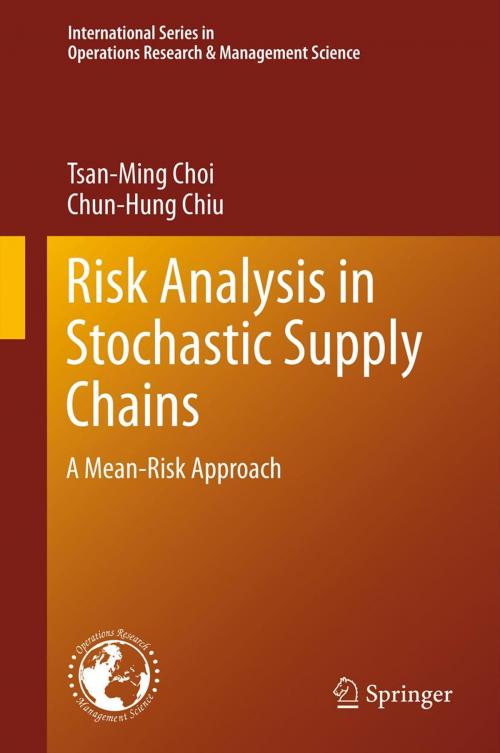Risk Analysis in Stochastic Supply Chains
A Mean-Risk Approach
Business & Finance, Management & Leadership, Operations Research, Production & Operations Management| Author: | Chun-Hung Chiu, Tsan-Ming Choi | ISBN: | 9781461438694 |
| Publisher: | Springer New York | Publication: | June 5, 2012 |
| Imprint: | Springer | Language: | English |
| Author: | Chun-Hung Chiu, Tsan-Ming Choi |
| ISBN: | 9781461438694 |
| Publisher: | Springer New York |
| Publication: | June 5, 2012 |
| Imprint: | Springer |
| Language: | English |
Risk analysis is crucial in stochastic supply chain models. Over the past few years, the pace has quickened for research attempting to explore risk analysis issues in supply chain management problems, while the majority of recent papers focus on conceptual framework or computational numerical analysis. Pioneered by Nobel laureate Markowitz in the 1950s, the mean-risk (MR) formulation became a fundamental theory for risk management in finance. Despite the significance and popularity of MR-related approaches in finance, their applications in studying multi-echelon supply chain management problems have only been seriously explored in recent years.
While the MR approach has already been shown to be useful in conducting risk analysis in stochastic supply chain models, there is no comprehensive reference source that provides the state-of-the-art findings on this important model for supply chain management. Thus it is significant to have a book that reviews and extends the MR related works for supply chain risk analysis.
This book is organized into five chapters. Chapter 1 introduces the topic, offers a timely review of various related areas, and explains why the MR approach is important for conducting supply chain risk analysis. Chapter 2 examines the single period inventory model with the mean-variance and mean-semi-deviation approaches. Extensive discussions on the efficient frontiers are also reported. Chapter 3 explores the infinite horizon multi-period inventory model with a mean-variance approach. Chapter 4 investigates the supply chain coordination problem with a versatile target sales rebate contract and a risk averse retailer possessing the mean-variance optimization objective. Chapter 5 concludes the book and discusses various promising future research directions and extensions. Every chapter can be taken as a self-contained article, and the notation within each chapter is consistently employed.
Risk analysis is crucial in stochastic supply chain models. Over the past few years, the pace has quickened for research attempting to explore risk analysis issues in supply chain management problems, while the majority of recent papers focus on conceptual framework or computational numerical analysis. Pioneered by Nobel laureate Markowitz in the 1950s, the mean-risk (MR) formulation became a fundamental theory for risk management in finance. Despite the significance and popularity of MR-related approaches in finance, their applications in studying multi-echelon supply chain management problems have only been seriously explored in recent years.
While the MR approach has already been shown to be useful in conducting risk analysis in stochastic supply chain models, there is no comprehensive reference source that provides the state-of-the-art findings on this important model for supply chain management. Thus it is significant to have a book that reviews and extends the MR related works for supply chain risk analysis.
This book is organized into five chapters. Chapter 1 introduces the topic, offers a timely review of various related areas, and explains why the MR approach is important for conducting supply chain risk analysis. Chapter 2 examines the single period inventory model with the mean-variance and mean-semi-deviation approaches. Extensive discussions on the efficient frontiers are also reported. Chapter 3 explores the infinite horizon multi-period inventory model with a mean-variance approach. Chapter 4 investigates the supply chain coordination problem with a versatile target sales rebate contract and a risk averse retailer possessing the mean-variance optimization objective. Chapter 5 concludes the book and discusses various promising future research directions and extensions. Every chapter can be taken as a self-contained article, and the notation within each chapter is consistently employed.















